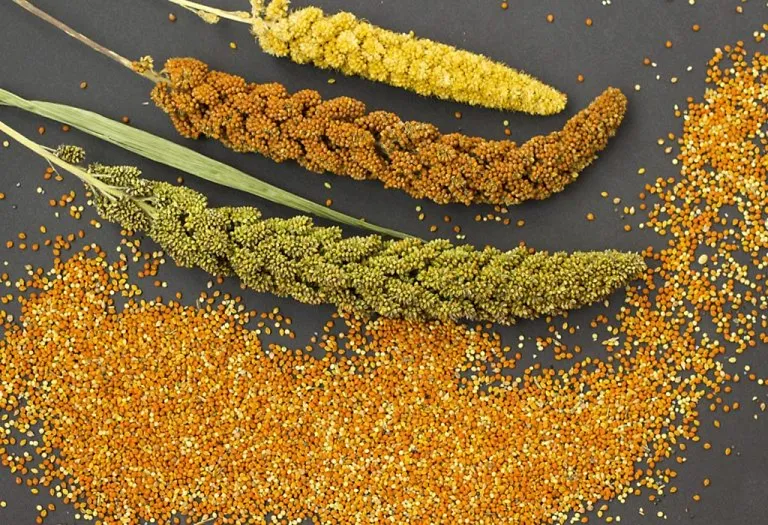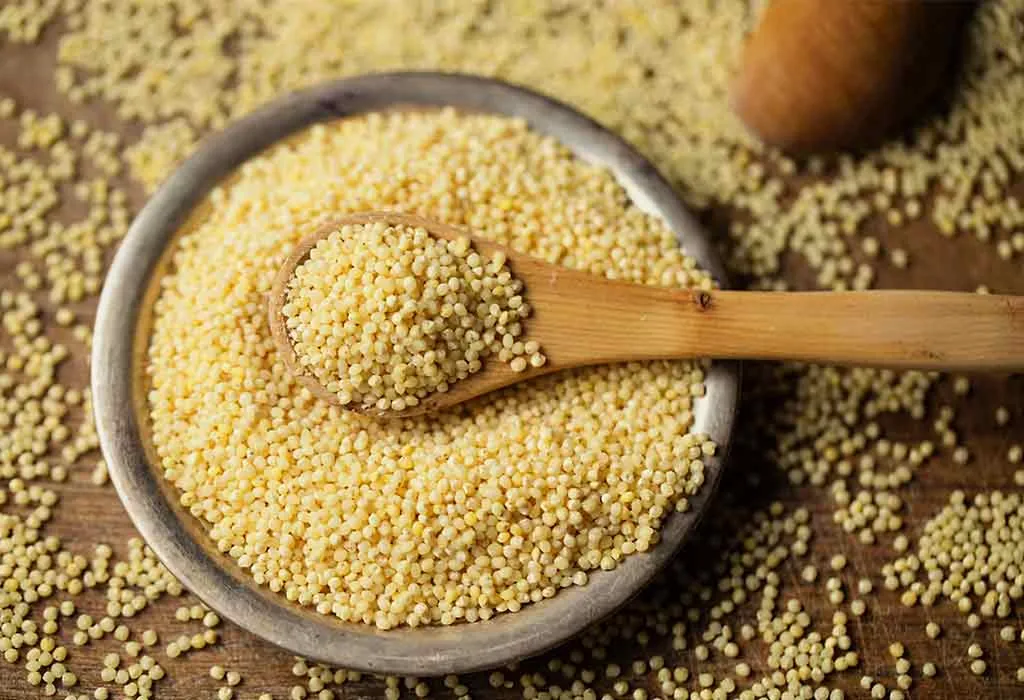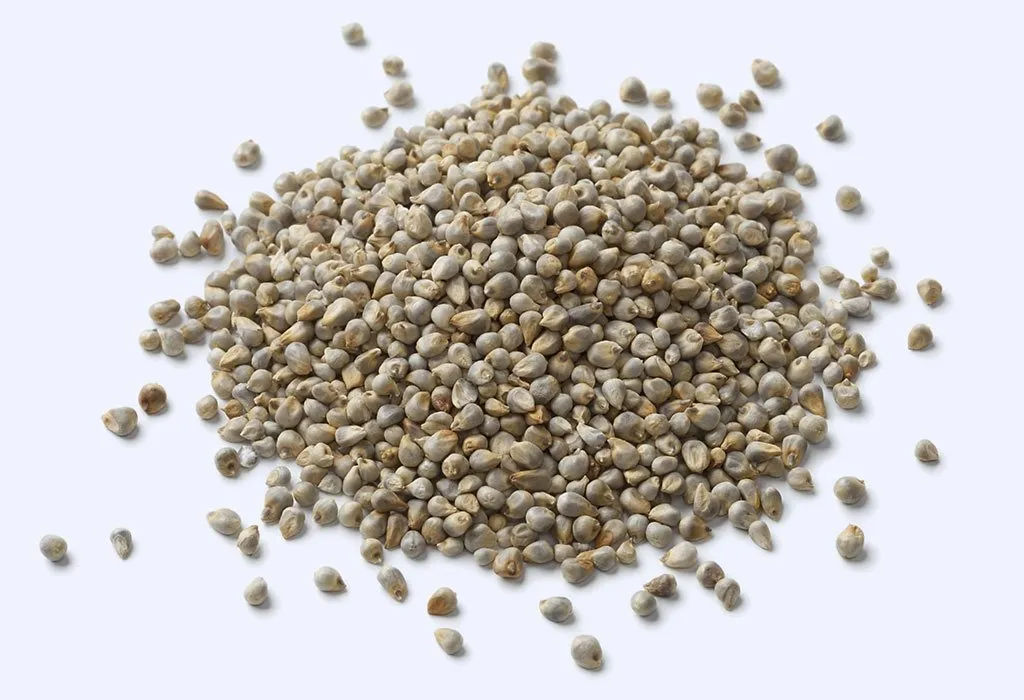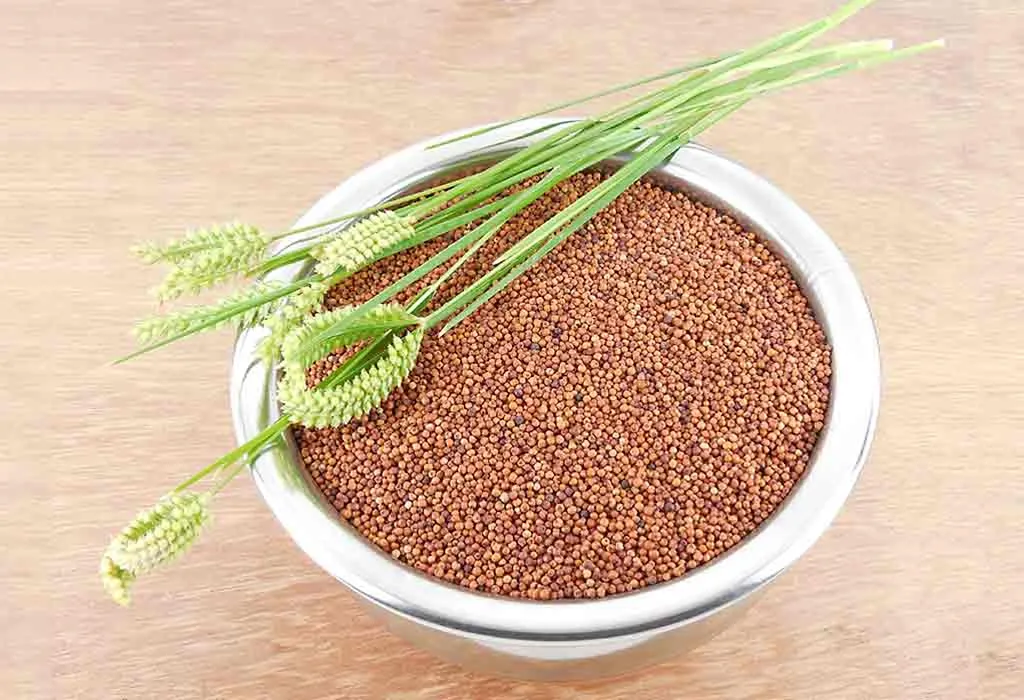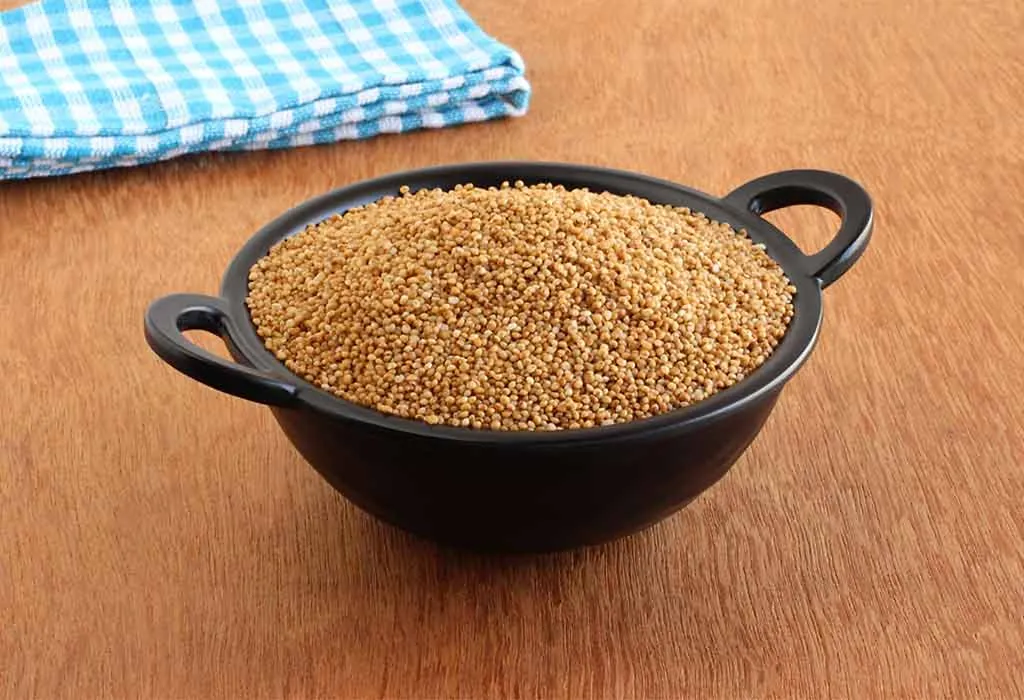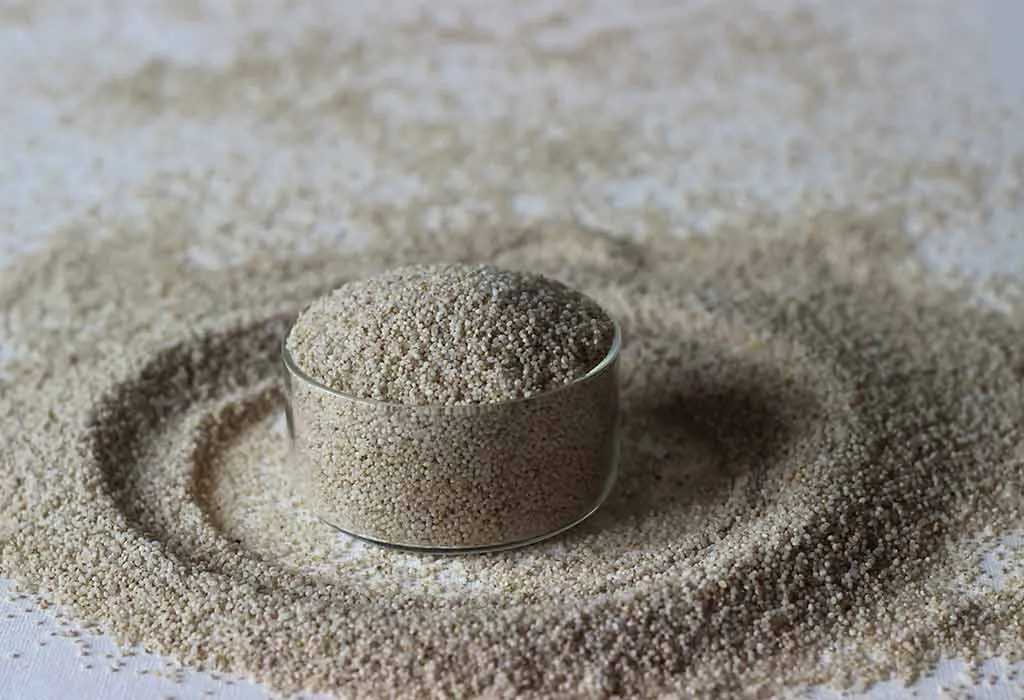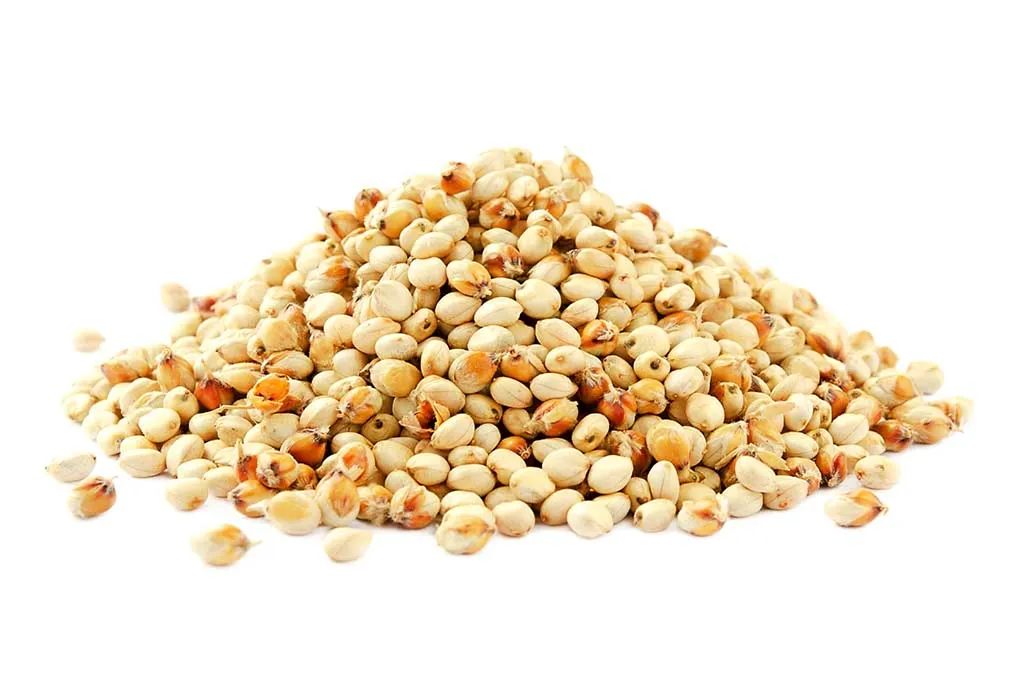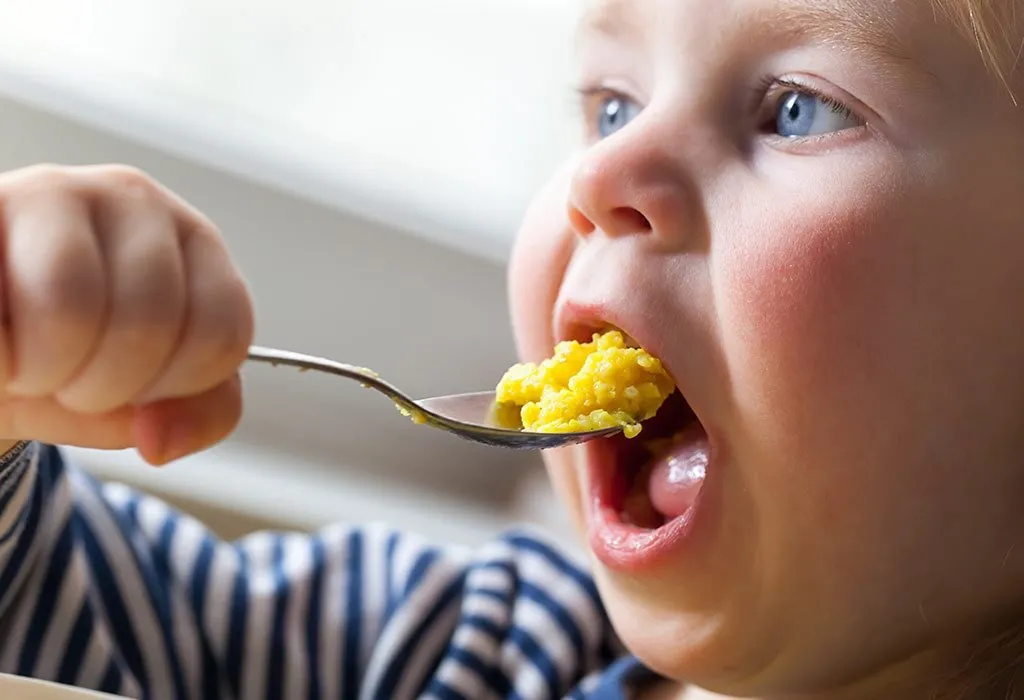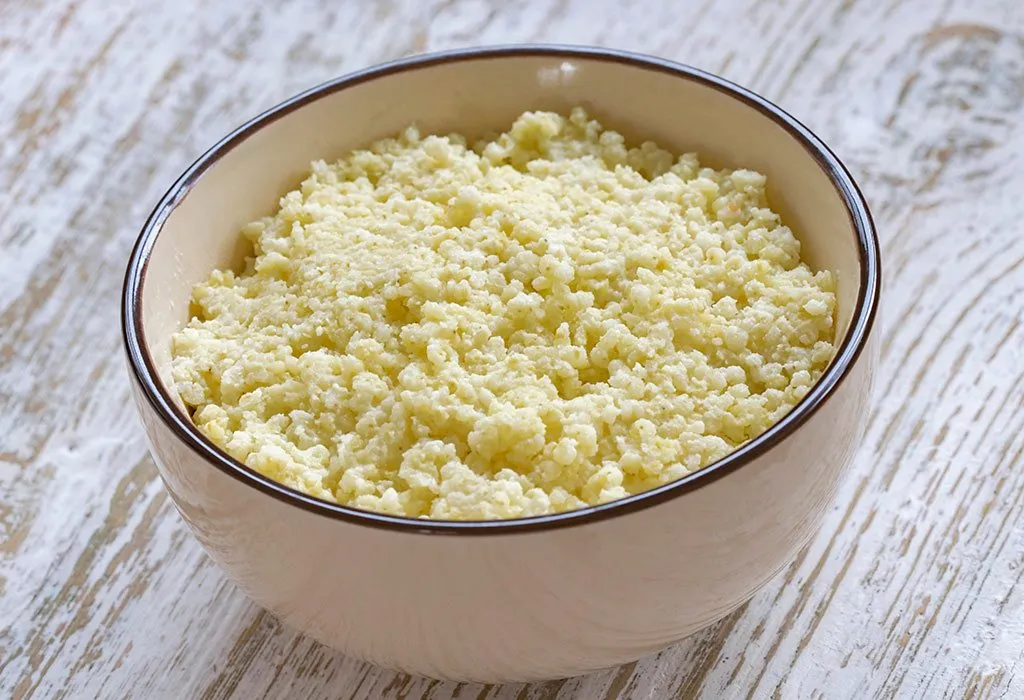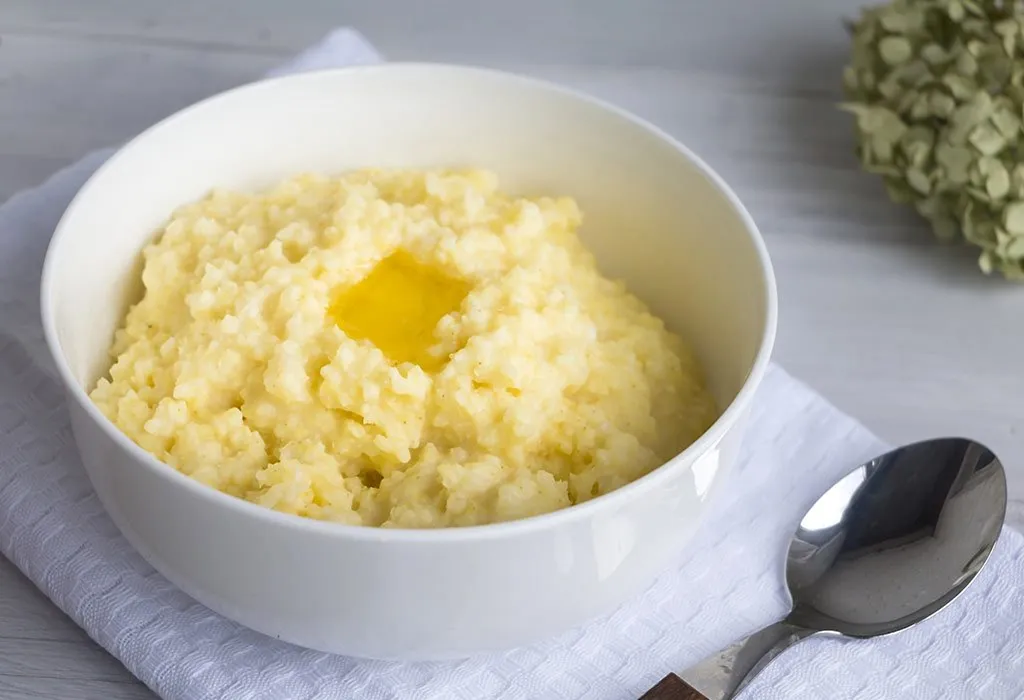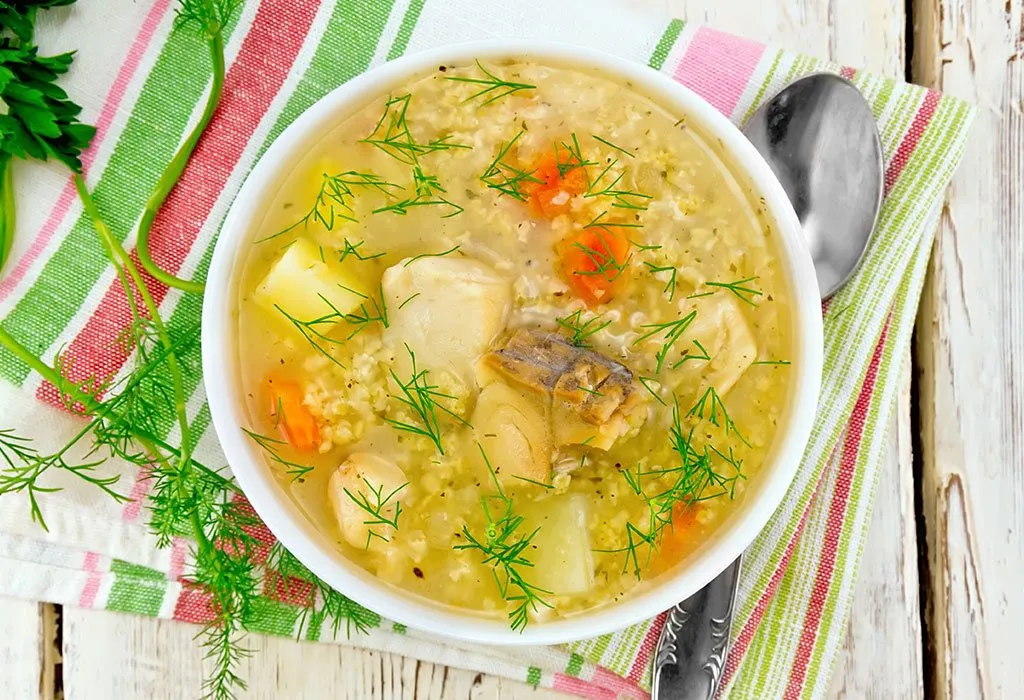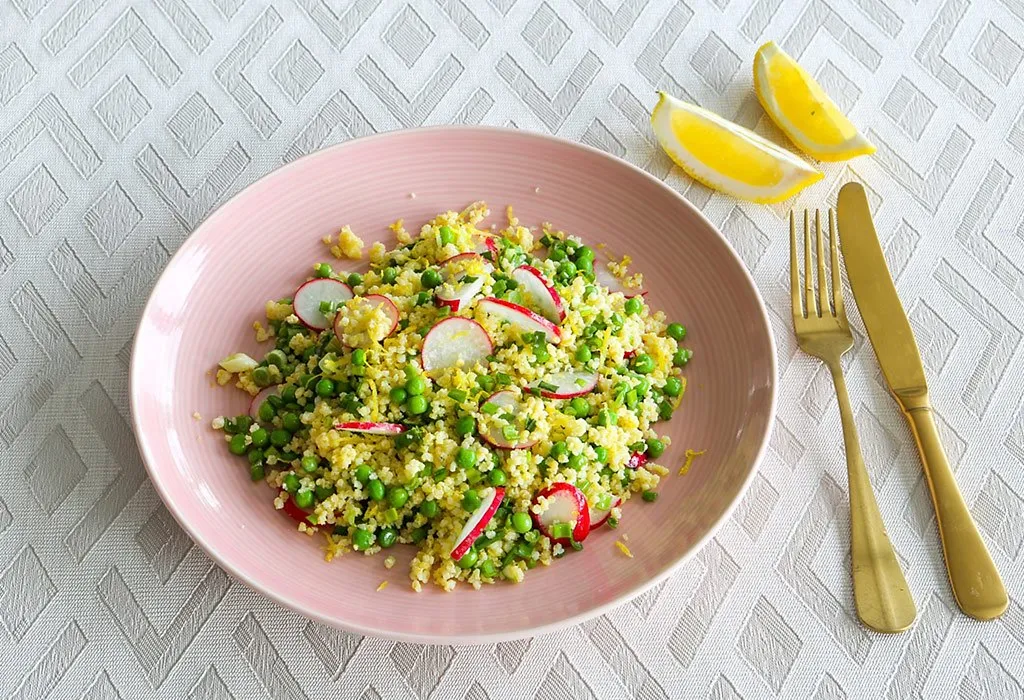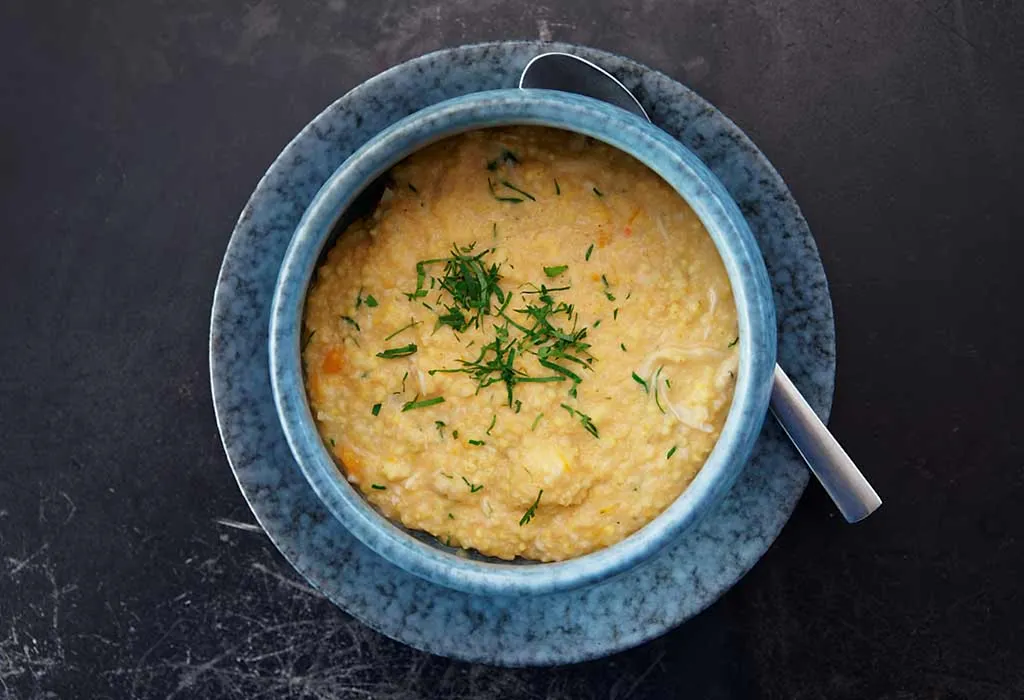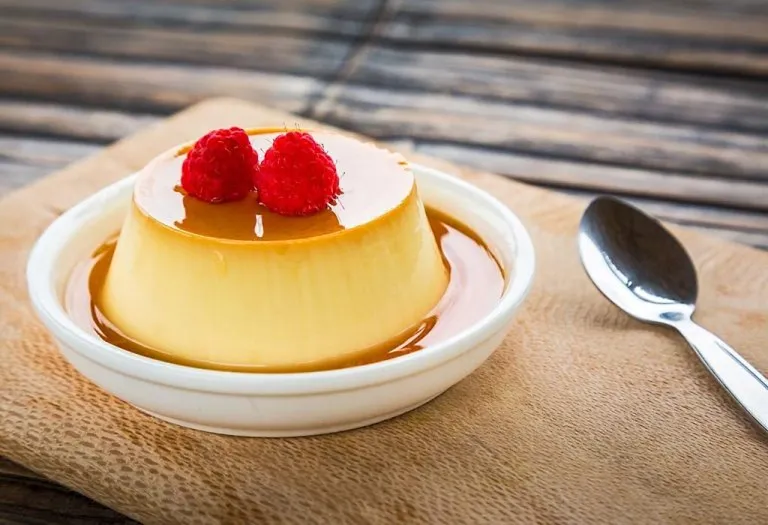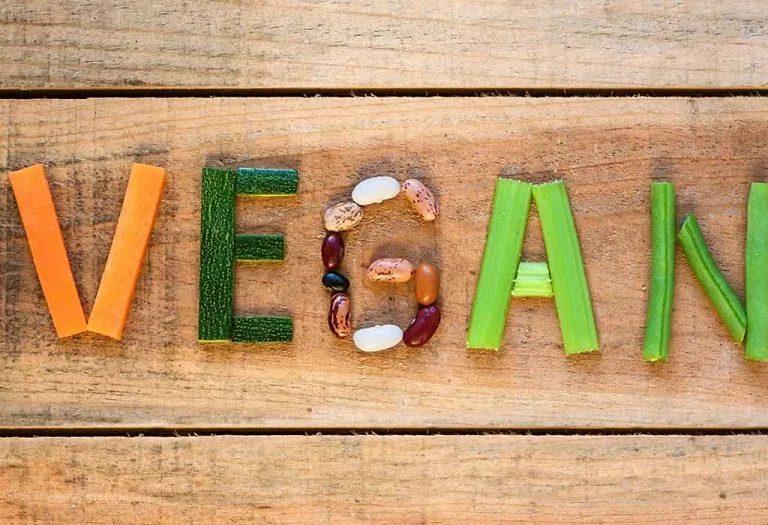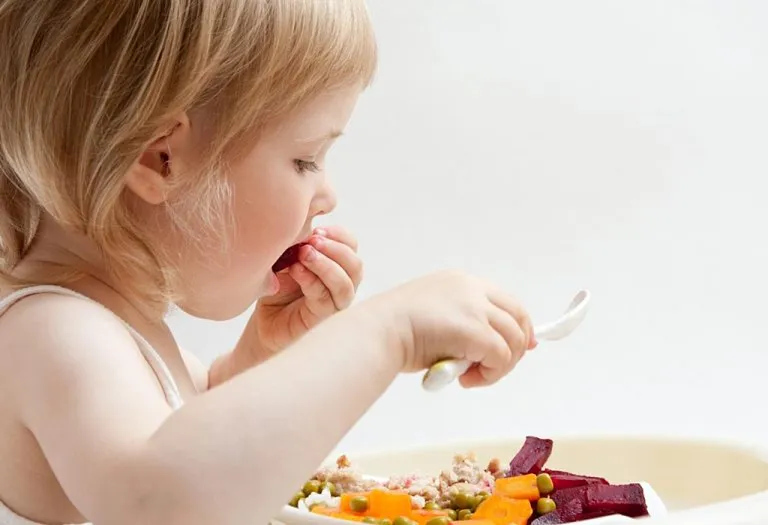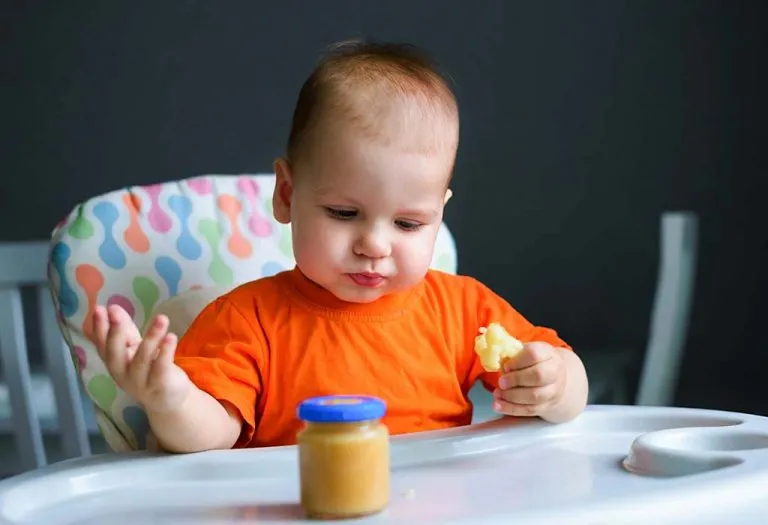Millet (Bajra) for Babies – Health Benefits and Recipes

If you’re a parent to a baby or toddler, you’ve most likely heard from their doctor or nutritionist that a baby’s diet is instrumental in their development. And we couldn’t agree more! What you feed your baby will impact their physical health and form dietary habits in them. This is why giving healthy foods to babies is important from early on. Millet for baby is one of the healthiest ingredients for babies and adults to include in their diet and it is also one of the most versatile ingredients to cook with. Read on to know when and how you can include millet in your baby’s diet!
What Is Millet?
Millets are gluten-free, and rich in fibre grain that is a nutritious, highly digestible grain that is both nutritious and easy to prepare. This grain is considered one of the least allergenic foods available today. It very closely resembles barley in terms of size and shape but is high in fibre, which makes it easy to digest. Millets are also considered superfoods because it is additionally rich in Vitamin B, Protein, Potassium, Iron, Magnesium and Phosphorus.
What Kinds of Millet Are Available in India?
One of the reasons you can use millets with versatility is due to the number of dishes that can be made with this superfood, you can make anything from millet idlis to millet cereal for babies, this is because there are a number of varieties of millets. Here are the ones easiest to find in India:
1. Foxtail Millet
Known as Kakum orKangniin Hindi, foxtail millet is commonly found in India. This type of millet is great for controlling blood pressure and cholesterol levels.
2. Pearl Millet
This is the most commonly found millet in India and is known as Bajra. This type of millet is renowned for its ability to help manage and prevent type 2 diabetes. It is also extremely rich in magnesium.
3. Finger Millet
Known as Ragi, this millet is extremely popular in Southern India, specifically in the farming state of Karnataka. It is common to use finger millet for babies due to its digestibility and nutritional value.
4. Kodo Millet
Rich in a type of antioxidant known as polyphenol and fibre while also being low in fat, this millet is commonly used to manage diabetes. It is known as Kodra or Varagu.
5. Little Millet
Known for its ability to help fight stomach diseases and diabetes, this type of millet is also rich in iron, fibre and antioxidants. It is known as Kutki or Saamai.
6. Barnyard Millet
Commonly called Jhangora or Kuthiravali, this type of millet is extremely rich in fibre, phosphorus and calcium.
7. Sorghum Millet
Commonly called Jowar, this millet is considered one of the easiest available and popular millet in India, it is rich in unsaturated fats, protein, calcium and minerals like phosphorus and potassium. It is also high in micronutrients and antioxidants.
Nutritional Chart of Millets
Here is a nutritional chart for all the millets mentioned above:
| Crop / Nutrient | Protein(g) | Fat (g) | Fiber(g) | Minerals(g) | Iron(mg) | Calcium(mg) | Calories (kcal) |
| Pearl Millet | 10.6 | 4.8 | 1.3 | 2.3 | 16.9 | 38 | 378 |
| Finger Millet | 7.3 | 1.5 | 3.6 | 2.7 | 3.9 | 344 | 336 |
| Foxtail Millet | 12.3 | 4 | 8 | 3.3 | 2.8 | 31 | 473 |
| Kodo Millet | 8.3 | 3.6 | 9 | 2.6 | 0.5 | 27 | 309 |
| Little Millet | 7.7 | 5.2 | 7.6 | 1.5 | 9.3 | 17 | 207 |
| Barnyard Millet | 11.2 | 3.9 | 10.1 | 4.4 | 15.2 | 11 | 342 |
| Sorghum | 10.4 | 3.1 | 2 | 1.6 | 5.4 | 25 | 329 |
| Proso Millet | 12.5 | 2.9 | 2.2 | 1.9 | 0.8 | 14 | 356 |
| Rice | 6.8 | 2.7 | 0.2 | 0.6 | 0.7 | 10 | 362 |
| Wheat | 11.8 | 2 | 1.2 | 1.5 | 5.3 | 41 | 348 |
Is Millet Safe for Infants?
Millets are extremely safe for infants when prepared correctly. Millets are rich in antioxidants, protein, vitamins and minerals. Millets are also easy to digest and are commonly considered gluten-free, this makes it extremely rare that your child will be allergic to them.
When Can Your Baby Eat Millet?
Your baby can start eating millets at around 6 months of age (1). But when introducing it, remember that any new ingredient, millets included, should be eased into a child’s diet. Start them off with a spoonful and gradually increase the quantity.
Which Millet is Good for Babies?
Most millets are great for babies, it is however recommended that you feed your child pearl millet, foxtail millet or sorghum millet as they are the easiest to prepare and digest. Remember to talk to your nutritionist and doctors for more precise information on what millets can be fed to your child specifically.
Health Benefits of Millet for Babies
Millets have immense nutritional value and thus have numerous health benefits (2). Here are a few of these.
1. Helps Digestion
One of the most important nutrients that help with digestion is fibre as most millets are rich in fibre. Millets also are known to have antioxidants and properties that help combat and prevent stomach bugs.
2. Strong Bones
One mineral most millets are rich in is calcium, which plays a huge part in developing strong healthy bones in the baby.
3. Helps in Muscle Recovery
As your baby grows, their muscles are used in different ways, this can cause muscle fatigue. Protein is important for muscle recovery and millets are a magnificent source of protein and the healthiest source of protein for babies.
4. Helps With Metabolic Rates
A key mineral involved with breaking down and metabolizing fats is phosphorus, this is essentially also important in repairing damaged tissues. Most types of millet are rich in phosphorus.
5. Prevents Anaemia
Millets are rich in iron, which helps prevent your babies from becoming anaemic. (3)
6. Helps in Weight Management
Millets are a rich source of healthy carbohydrates called complex carbohydrates, this keeps your baby full for longer because it takes longer for the body to break these carbs down. This also helps with weight management.
How to Select and Store Millet as Baby Food?
It is recommended that you stick to organic ingredients that are prepared fresh. Ensure that any food is stored in hygienic conditions; do not feed your child stale food. It is recommended that millets specifically are not exposed to direct sunlight and are stored in a clean, dark and cool environment. Do not store millets in the refrigerator if it is not yet cooked.
Millet Recipes for Your Baby
Millets are extremely easy to prepare. This is why cooking millet for your baby is extremely easy, here are a few recipes:
1. Millet Porridge
Bajra porridge for babies is an easy-to-make and healthy dish for your baby.
What You Will Need
- Finger Millets – 3 tablespoons
- Water – 1 cup
How to Prepare
- In a saucepan, boil a cup of water.
- Add millets.
- Stir continuously till it is smooth.
- Cover and let it boil for 10 mi.
- Let it cool to room temperature and serve.
2. Millet Cereal
Another easy-to-prepare dish, here’s how you make it.
What You Will Need
- Olive Oil – 1 tablespoon
- Sorghum Millet – 1 cup
- Water – 2 cups
How to Prepare
- Heat a pan with the olive oil on a low flame.
- Toast the millets till they brown.
- Boil water separately, add to the millet and stir till it is fluffy.
- Add vanilla, cinnamon or veggies.
- Serve at room temperature.
3. Millet Stew
Stews are extremely healthy for your child, here’s a really cool recipe for millet stew.
What You Will Need
- Diced Veggies – 1 handful
- Foxtail Millets – 1 cup
- Pear Juice – ¾ cup
- Water – 1 cup
How to Prepare
- To make this stew, simply add water to a saucepan, add all the ingredients, and bring to a boil on low heat. Serve at room temperature.
4. Millet Salad
Salads are a great lunch on a hot day for your child, here’s a simple but tasty salad recipe.
What You Will Need
- Sorghum Millet – 3 tablespoons
- Green Veggies – 1 cup
- Olive Oil – 1 tablespoon
How to Prepare
- To make this dish, add olive oil to a pan and heat on a low flame, then lightly toast all the veggies and millets for 10 minutes and serve at room temperature.
5. Millet and Vegetable Mash
This is a nutritious and wholesome dish for babies, combining the goodness of millet with a variety of diced vegetables for a flavorful and balanced meal.
What You Will Need
- 1/2 cup millet
- 1 cup mixed vegetables (carrots, peas, sweet potatoes), diced
- Water or vegetable broth for cooking
- 1 tablespoon unsalted butter or olive oil (optional)
How to Prepare
- Rinse the millet under cold water and drain.
- In a saucepan, bring water or vegetable broth to a boil.
- Add the rinsed millet and diced vegetables to the boiling liquid.
- Reduce heat to low, cover, and simmer for about 20 minutes or until millet and vegetables are tender.
- Once cooked, remove from heat and let it cool slightly.
- Mash the mixture using a fork or potato masher until the desired consistency is reached.
- Optionally, stir in unsalted butter or olive oil for added flavor.
- Allow it to cool to a safe temperature before serving to your baby.
Are There Any Side Effects of Millets on Babies?
There are generally no known side effects of millets on babies when introduced as part of a balanced diet. However, like any food, millets may cause digestive discomfort or allergic reactions in some infants. It’s essential to introduce millets gradually and observe your baby’s reaction. If you notice any signs of discomfort, such as bloating, gas, diarrhea, or allergic symptoms like rashes or difficulty breathing, discontinue feeding millets and consult with your pediatrician for further guidance. Additionally, ensure that millets are cooked thoroughly and mashed or pureed to a suitable consistency for your baby’s age and developmental stage to minimize the risk of choking.
FAQs
1. How does millet benefit baby’s health?
Millet supports overall growth and development in babies due to its nutrient density. It aids in bone development, boosts energy levels, supports digestion, and helps in maintaining healthy blood sugar levels, promoting overall well-being.
2. What are some easy millet recipes for babies?
Simple millet recipes for babies include millet porridge, millet cereal, millet stew, and millet pancakes. These dishes are easy to prepare, nutrient-rich, and well-suited for babies transitioning to solid foods.
3. Can millet cause allergies in babies?
While millet is generally considered safe for babies, some infants may have allergies or sensitivities to grains. It’s essential to introduce millet gradually and observe your baby for any signs of allergic reactions, such as rashes, vomiting, or difficulty breathing. If you suspect an allergy, consult with your pediatrician for guidance.
This was all about little millet for babies. It is extremely important to incorporate other healthy ingredients into your child’s meal plan, millets are superfoods, and the bajra porridge benefits are immense, but they cannot be the entire diet for your child. To better understand the nutritional requirements of your child and how to incorporate millets into their diet, please consult your dietician or nutritionist.
References/Resources:
1. Nutritional and Health Benefits of Millets; ICAR – Indian Institute of Millets Research (IIMR); https://millets.res.in/m_recipes/Nutritional_health_benefits_millets.pdf
2. Anitha. S, Kane-Potaka. J, Botha. R, Givens. D, et. al.; Millets Can Have a Major Impact on Improving Iron Status, Hemoglobin Level, and in Reducing Iron Deficiency Anemia–A Systematic Review and Meta-Analysis; Frontiers; https://www.frontiersin.org/articles/10.3389/fnut.2021.725529/full; October 2021
3. Millet, cooked; NutritionValue.org; https://www.nutritionvalue.org/Millet%2C_cooked_nutritional_value.html
4. Benefits of millets and how to use it wisely; Smart Food; https://www.smartfood.org/project/benefits-of-millets-and-how-to-use-it-wisely/
5. Kumar. A, Rani. M, Mani. S, Shah. P, Singh. D, et. al.; Nutritional Significance and Antioxidant-Mediated Antiaging Effects of Finger Millet: Molecular Insights and Prospects; Frontiers; https://www.frontiersin.org/articles/10.3389/fsufs.2021.684318/full; October 2021
6. Gaitan. E, Lindsay. R, Reichert. R, et. al.; Antithyroid and goitrogenic effects of millet: role of C-glycosyl flavones (The Journal of Clinical Endocrinology & Metabolism); National Library of Medicine; https://pubmed.ncbi.nlm.nih.gov/2921306/; April 1989
Also Read:
Wheat for Babies
Brown Rice for Infant
Benefits of Dalia for Babies
Introducing Ragi for Infants
Was This Article Helpful?
Parenting is a huge responsibility, for you as a caregiver, but also for us as a parenting content platform. We understand that and take our responsibility of creating credible content seriously. FirstCry Parenting articles are written and published only after extensive research using factually sound references to deliver quality content that is accurate, validated by experts, and completely reliable. To understand how we go about creating content that is credible, read our editorial policy here.






